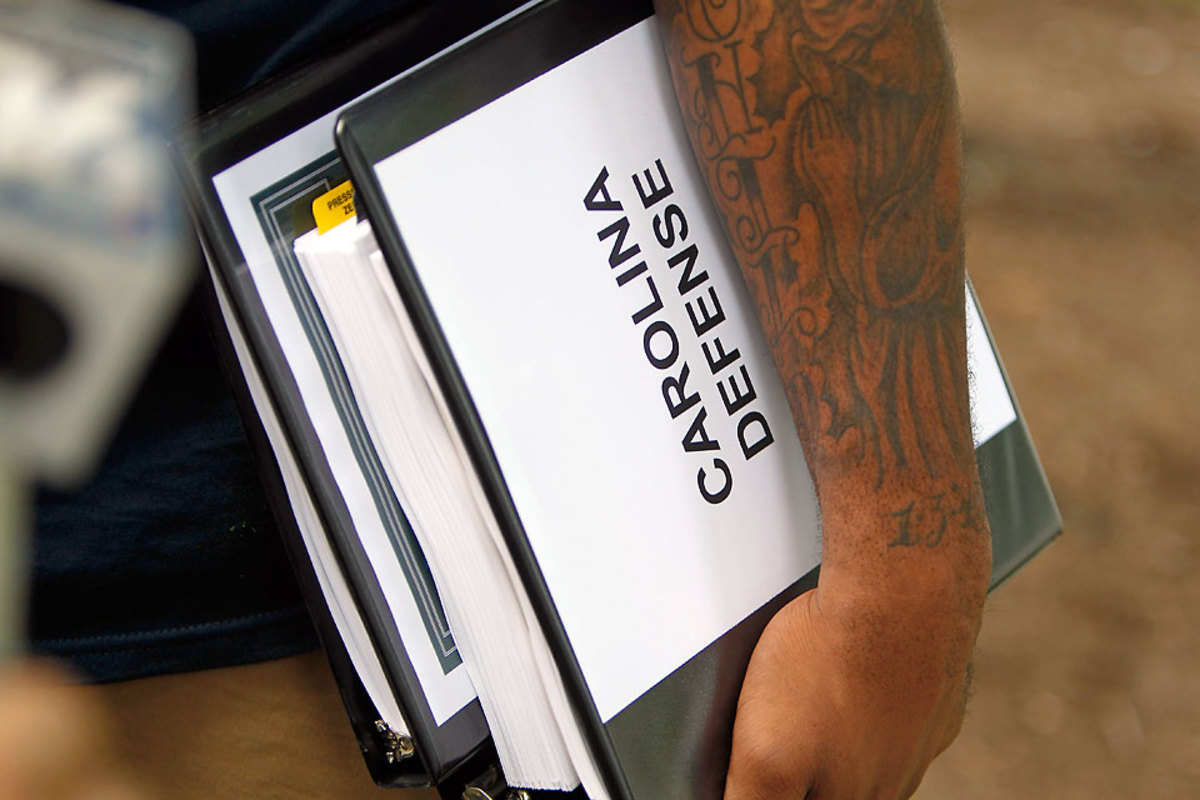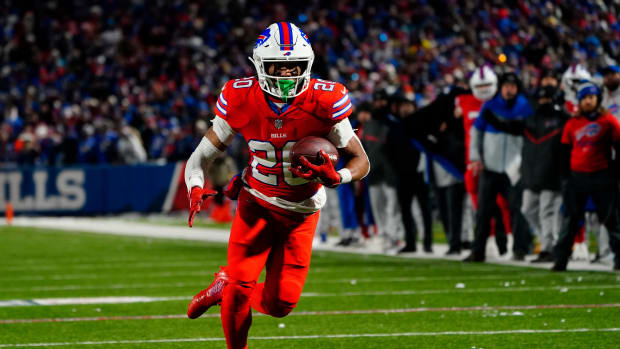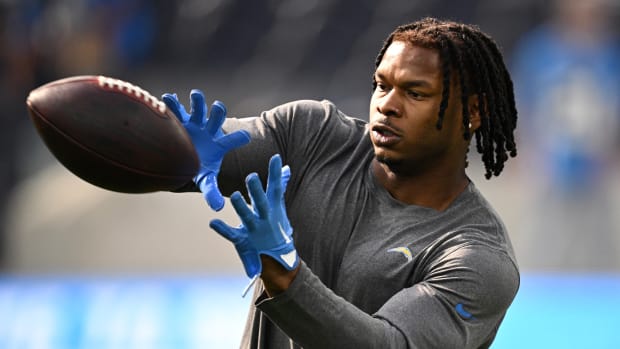
You Think It’s Easy to Cut a Guy?
Although the weather is at its warmest, we have entered the coldest time of year on the NFL calendar. While thousands of young men are living their dreams by being in training camp with an NFL team, several hundred of those dreams will soon be crushed. Former Jaguar and current Chief Austen Lane detailed what it’s like for a player to be cut a few weeks ago for The MMQB. Here is a perspective from the other side.
Nasty Numbers
Every team is allowed to have 90 players on its roster for the majority of training camp. If it were up to the coaches, there would be no limit at all. Coaches always want more players to squeeze into their schemes. With the new CBA restricting players’ work time in the offseason, coaches crave the captive environment of camp. From the business side, however, players are numbers on 1) a ledger that needs to be balanced and 2) a roster that needs to be downsized.
Some players are released even before camp begins, as teams adjust to their needs at each position. It’s always a numbers game, meaning someone has to go. This happened to Lane’s teammate in Jacksonville, Jordan Rodgers—Aaron’s brother—when the Jaguars decided to sacrifice a fifth quarterback for numbers elsewhere. This is just the start of the process.
The 90-player roster is reduced in two waves in an inexorable march to get down to the final 53, with the most dramatic personnel reduction occurring on Labor Day weekend. It’s a ruthless process, and the cruel reality about making an NFL roster is this: There are numerous players who have done everything they were asked to do—in every practice, every OTA, every lifting session, every meeting—with unquestioned effort and commitment, yet they have no realistic chance of making the team. The numbers game is always unforgiving.
If you think training camps are about having an open competition, guess again. Teams have proprietary depth charts going into camp, different from the ones shared with the media. There are usually between four and six spots that are open to competition, depending largely on numbers and personnel groupings rather than the performance of players on the bubble.
For instance, if we had a couple of young offensive linemen we wanted to keep on the roster for any number of reasons—it could even be the limited practice availability of older linemen—we would “go heavy” up front. This would mean the end of the road for a sixth linebacker, a fifth safety or a fourth running back. Every team makes these roster decisions that affect players at other positions regardless of their performance.
You might ask, what about the against-all-odds success stories like Wes Welker and Victor Cruz? There are outliers each year who beat the odds, and every team points to these kinds of guys and say, “Every position is up for grabs.” But those players are clearly the exception, not the rule.
Reggie’s List
The Calendar
Here are the key dates for teams to make roster decisions.
August 27—Teams must cut their roster from 90 players to 75 by 4:00 p.m. ET.
August 31—Teams must cut their roster from 75 players to a final group of 53 by 6:00 p.m. ET
September 1—At 12 p.m. ET, the claiming period for all players placed on waivers in the final roster reduction expires. Beginning at 12 p.m., clubs can begin to put together their eight-man practice squad.
September 4—The deadline for all teams to get under the salary cap.
October 29—The deadline for teams to make trades.
During my nine seasons as the Packers' vice president, coaches and personnel staff gathered to determine who stayed and who had to go, often with differing opinions about players. Doctors were consulted on injury-affected players, and I would present cash and salary cap implications of various roster scenarios. After deliberations and much lobbying—position coaches usually wanted more numbers for their unit—we would finally settle on a list that no player ever wants to be on: The Cut List.
The list was stark in its simplicity. It would not have names, just jersey numbers, perhaps to facilitate cleaning out the lockers. The list was held and managed by pro personnel director Reggie McKenzie, who is now general manager of the Raiders. I would listen to Reggie go down the list and check off the players as he uttered his trademark line to them, “Sorry big fella, but we’re gonna have to let you go.”
The players would then go through the numbing and humbling administrative check-offs—turning in their playbook, medical releases and travel arrangements—before saying their goodbyes. Position coaches would pop their heads out to give a quick “Good luck!” and get right back to work preparing for games. Select players, such as longtime veterans or young players with potential, would be brought in to see the head coach and/or general manager, but those meetings were always brief. There was little that needed to be said. In leaving, all players are told, with varying degrees of sincerity, to stay in shape and be ready to get a phone call if someone got injured.
Perhaps it’s the former agent in me, but I always found these to be the hardest days of the year. Many of my colleagues in Green Bay and around the league could not understand my empathy toward the players, who knew what they were getting into. But to me, it was always sad and striking that almost 40% of the players practicing on NFL training camp fields on Aug. 1 were gone by Labor Day. One day they’re in the NFL, the next day they’re back home trying to answer questions from friends and family about what happened and what’s next.
Handling Rejection
Players handled the uncomfortable process in different ways. Most were sad, some had clearly been crying. Many were philosophical, solemnly contemplating life without football for the first time. Others were sullen and angry. I remember a player who walked into my office steaming, with his fists balled up, causing me to think about alerting security. (I didn’t, and was unharmed, thank you.)
An all-too-common reaction among released players is an unhealthy obsession about the player who secured a roster spot instead of him. Players become incredulous that “that guy” beat them out. As both an agent and a team executive I tried to counsel players to get past that; too many players live in delusion.
There were, however, certain players who gracefully accepted the decision, looked me in the eye, shook my hand and thanked me for the opportunity. These are players who make you feel worse about cutting them than they feel about being cut. One of those I specifically remember was a safety, Todd Franz, who bounced around the league. Even when we cut him, Todd’s professionalism and upbeat nature always stuck with me. We signed him as an injury replacement a couple of years later. Character counts.
But football is a numbers game, and this is the time of year where my longtime mantra on the business of football is on full display: so many players, so few jobs.
Former player agent and Packers executive Andrew Brandt answers your questions each Wednesday and writes his Business of Football column each Thursday on The MMQB. Tweet him your questions and follow him @adbrandt.




































